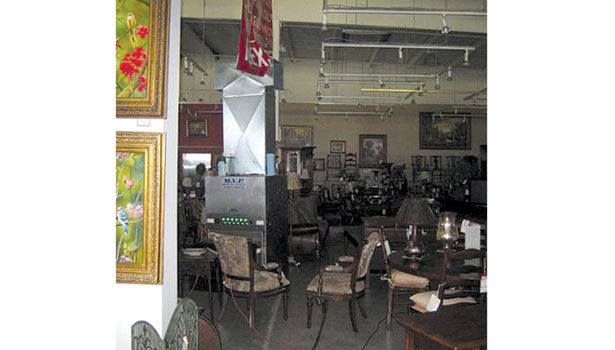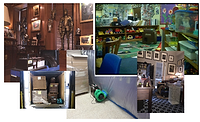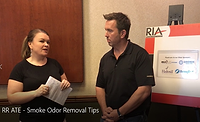Hydroxyl Generators: The New Tool for Deodorization
Hydroxyl free radical chemistry is very different from ozone chemistry




Contractors have long relied upon ozone, foggers, masking agents, filters and chemicals for deodorization. But the hydroxyl generator is a new technology that may be preferable to all of these methods in many circumstances and has now become an essential tool for many disaster cleanup contractors.
The Science
Hydroxyl radicals (·OH) are created naturally in the atmosphere when the sun’s ultraviolet rays react with water vapor (H2O) and oxygen (O2). They rapidly decompose chemicals in the air and are often referred to as “nature’s broom” because of their crucial role in helping to keep the Earth’s atmosphere clear of harmful organic and inorganic compounds. Hydroxyls work primarily by abstracting hydrogen atoms, thereby dismantling the molecular structure of odors and volatile organic compounds (VOCs). In fact, they react so rapidly that indoor environments have few natural hydroxyls present because they are consumed near their point of entry. Powerful hydroxyl generators using the same broad range of UV radiation as the sun are now used to naturally clean and deodorize indoor environments.
In the disaster restoration industry, hydroxyls are often compared to ozone because they are both oxidizing gasses. They both have the capacity to react with and destroy chemicals that cause odor, and they do not mask, filter or otherwise cover up odors. Hydroxyls, however, react over one million times faster than ozone and with a significantly broader range of compounds. Hydroxyls are known to react with as many as 5,000 different chemicals and are the second most powerful oxidant in the world, behind only fluorine. In practice, ozone is used in such high concentrations that it may deodorize slightly faster, but is toxic to humans and animals and damaging to many materials.
Hydroxyl free radical chemistry is very different from ozone chemistry. Hydroxyl radicals abstract hydrogen atoms from organic compounds, which begins a cascade of free radical decomposition processes called chain reactions. These chain reactions continue throughout the treatment space and enable the effective penetration and deodorization of porous materials such as clothing, furniture, rugs or other contents and structures. By contrast, ozone is a stable molecule and its reaction mechanisms are innately slower and more selective.
There is one primary method for generating hydroxyls. Patented by HGI Industries, Inc. (Odorox), this method replicates nature’s process by producing multiple wavelengths of high-energy UV lights that are able to generate hydroxyls by reacting with water vapor and oxygen in the air. This process creates approximately 2 million hydroxyls per cubic centimeter that exit the machines. An exponentially higher quantity of hydroxyls is produced inside the chamber of these machines. Together, this enables the deodorization of compounds in the air as well as those absorbed by structures and contents. This technology is able to produce a sufficient quantity of hydroxyls in any environment, including areas with relatively low humidity.
Hydroxyl Advantages
Unlike ozone, atmospheric hydroxyls are safe for people, animals, plants and all sensitive materials like rubber, plastic, leather, vinyl, electronics, paper and artwork. Contents can be wet while being deodorized without the risk of bleaching. Jobs can be streamlined when the contractor is able to deodorize while drying, cleaning and demoing. Both contents and structure can be treated at the same time, and as conditions permit, certain packout activities can be avoided or substantially reduced. In many cases, residents can stay in their home or businesses and remain open, while avoiding costly business interruption.
Hydroxyl machines have proven to be effective for almost any odor. They are commonly used for treating odors caused by fire and smoke, water losses, mold and VOCs. This technology is regularly deployed on losses ranging from large big box retail and industrial fires to residential Category 2 and 3 water losses. Hydroxyls have also proven to be very effective for odors that are difficult for ozone or other deodorization methods, such as those caused by protein fires, fuel oil, biohazard and sulfur compounds.
The overall safety and simplicity of the hydroxyl technology creates a lot of flexibility for contractors. Machines can be moved around while contractors work. They can be moved to more difficult areas and can even be left behind for lingering odors. Difficult items can be tented for some containment and a greater concentration of hydroxyls if necessary.
All contents can be treated with no risk of damage. This provides contractors with the opportunity to restore all items including electronics, artwork and important papers or collectables of significant retail or sentimental value.
Hydroxyl applications are a gentle and safe form of deodorization. As a general rule of thumb, hydroxyls generators cover approximately 1,000 to 1,500 square feet with normal 10 to 15 foot ceilings when treating moderate to severe odors. There are many factors that can affect this, such as the severity of odor, layout of the structure, whether or not contents are on-site, how long you have to complete the job, etc. Some deodorization can be done within only a few hours, but most applications take three to four days. Large industrial hydroxyl generators are also available for very large losses and have been successfully used on losses of several million cubic feet and more.
Just as in nature, very low concentrations of ozone are necessarily produced as a by-product of the UV irradiation process. Because of this, reasonable safety precautions are required for the most powerful machines on the market when used in very small and unventilated spaces. When using these machines, it is important to follow the manufacturer’s operating instructions and safety guidelines. The hydroxyl technology is relatively simple to use on small and large losses. Basic air movement principles are applicable, however proper training is recommended to maximize the use of this new and exciting technology.
Looking for a reprint of this article?
From high-res PDFs to custom plaques, order your copy today!







